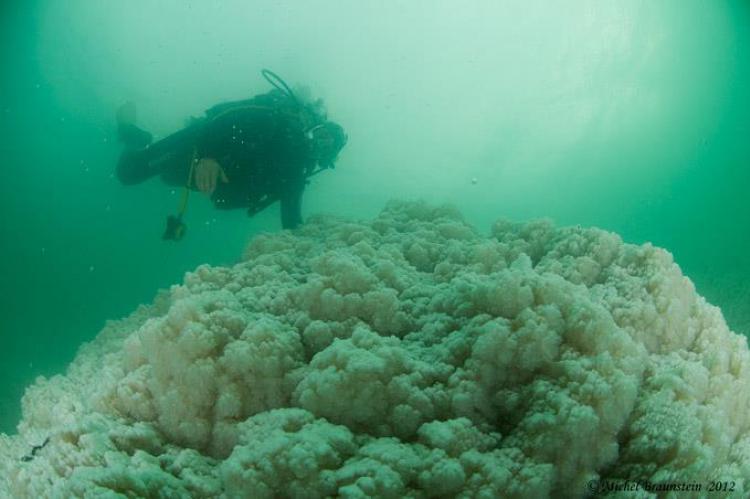Diving the Dead Sea
Having dived in plenty of spots around the world, I am always on the lookout for an unusual destination with unusual dives. It goes without saying that diving in the Dead Sea is not commonly found on the list of classic dives, and that’s what attracted me to it. The inland sea is located 425 meters below sea level. It is the deepest place on Earth.
Salinity reached 35 percent! Not an easy thing to overcome in order to get down to depth.
Tags & Taxonomy
You need 40 to 50kgs (80 to 100lbs) of lead, according to your size. These are divided into weights blocks attached around the waist and the front of the body as well as on the straps of the BCD.
The water of the Dead Sea is rather oily. Drops on gear and suits do not dry easily. You really need to have a good rinse and dry after a dive. Water drops not rinsed away may remain for several weeks.
The visibility underwater is often not conducive to diving, although there are brighter days.
Diving in the Dead Sea can only be done with a full face mask to protect the eyes, face and mouth from unfavorable waters. A first dive with a full face mask is organized in a pool a few days before the date of the dive. When that day came, my dive buddy and I met the instructors.
We were equipped with our 5mm wetsuits. After a short briefing and a refresher drill in the use of the masks, we climbed down the few salt encrusted rocks that still separated us from the sea. We put on our heavy weights belts, BCDs with complements of lead around the waist and added even to pockets, which felt really full and very heavy on the front of the body. It was not very comfortable.
We placed our impressive full face masks on. It was important to remember not to get even one little drop of Dead Sea water in the eye, because it is very embarrassing, which I found out later.
We got in for a first dive to get used to the awkward waters of the Dead Sea. It was not easy to descend, despite all the weight. It was also not easy to fin around in these dense waters. We were rapidly reaching eight meters deep.
Being an avid photographer, I took a look at the bottom of a pillar of salt in order to find the best angle to place myself when I came back later with my camera. It was just my luck, then, that a drop of salty water seeped into my mask and into my left eye. This was not a pleasant experience.
I couldn’t open my eye, and I couldn’t do anything underwater to repair the situation. So, I signaled to the instructor, and we went back to the surface. After rinsing my eye with fresh water, I felt much better, and we returned to the water to finish this first dive.
Here, there are no corals as I am used to seeing in the Red Sea or in other warm seas.
There’s no life, just field after field of white salt, the color of bleached coral. Sometimes a salt cathedral would break up the relief. Sometimes walls of a canyon or a cave appeared. But certainly, it was an otherworldly underwater landscape and a very unique experience. ■
Download the full article ⬇︎

Originally published
X-Ray Mag #47
Red Sea travel special: Brothers Islands, Cairo to El Quseir, Elphinstone; Interview with Archim Schlöffel; Communing with cuttlefish; Kimbe Bay’s Zero Wreck; Bell Island wrecks; Hooded nudibranchs; Giant manta rays of Ecuador; Diving Timor Leste; How to photograph sharks with Andy Murch; Interview with PADI co-founder, John Cronin; Muck diving photography with Lawson Wood; The Dead Sea; Plus news and discoveries, equipment and training news, books and media, underwater photo and video equipment, turtle news, shark tales, whale tales and much more...
..



